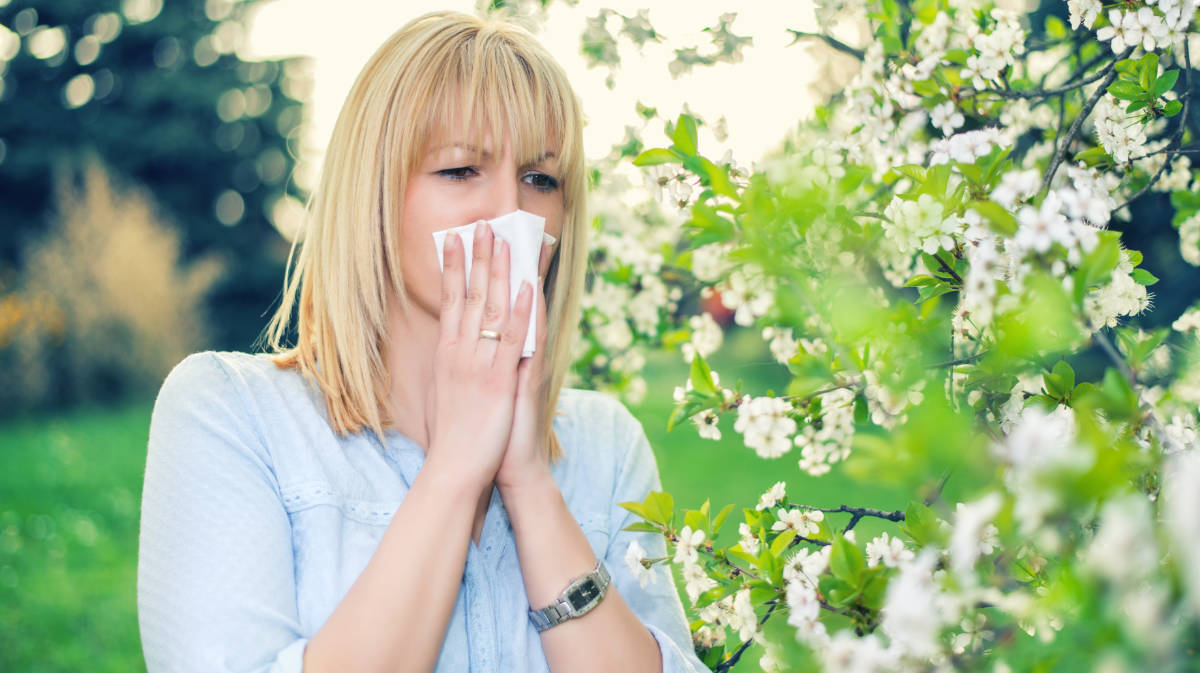From nuisance sneezing attacks to full-blown illness, hay fever can make life pretty miserable during pollen season – and if you’re a sufferer, chances are you have a few tricks up your sleeve for when you head outdoors during spring and summer. That’s where our guide on how to reduce pollen in your home and create a pollen-proof garden can help.
What is hay fever?
Also known as allergic rhinitis, hay fever affects one in four people, while around 80% of those with asthma also have hay fever, according to Asthma UK.
It’s set off by a reaction to pollen from grass, trees and weeds during the early spring and summer months, as well as mould spores which can grow on rotting logs, fallen leaves, compost piles, and on grasses and grains.
It’s not just when you’re trying to enjoy your garden that you’re at risk. Pollen sticks to just about everything (yep, that means clothes, shoes, hair, skin, pets) and gets carried in the air, so it’s inevitable that some of the pesky particles will end up infiltrating your home too. Cue broken sleep, rotten evenings and starting the day with streaming eyes before you’ve even set foot outside.
So, what can you do to reduce pollen in your home, and how can you reduce how pollen affects you when outside in the garden?
Read our guide to household pests – how to rid your home of ants, wasps, roaches and moths.
How to reduce pollen in your home
While it may not be possible to banish it from your home entirely, these steps will certainly help pollen proof your home…
1. Keep windows closed as much as possible

Pollen can waft indoors through open windows, so it’s advisable to keep them closed as much as possible during pollen season. Naturally, nobody wants a stuffy house, and you may need to let some air through occasionally – but be savvy with your timings to minimise pollen infiltration. Allergy UK points out that keeping windows closed is especially “important in early mornings, when pollen is released, and in the evening when the air cools and pollens that have been carried up into the air begin to fall to ground level again”. Keep an eye on daily pollen forecasts too, so you can judge when it’s best to let some air through.
2. Wash curtains and fabric covers to remove pollen
Despite your best efforts, there’s still a good chance some pollen will get into your home – so it’s a good idea to wash your curtains, along with any removable sofa or cushion covers. There’s no set rule as to how often you should do this, but if your symptoms are flaring up while you’re at home, a thorough top-to-toe clean is probably in order!
3. Don’t hang laundry to dry outdoors
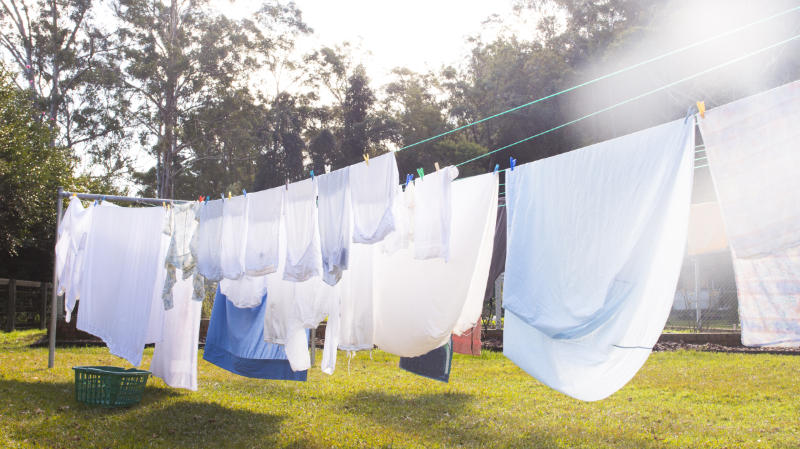
Sure, being able to hang washing out to dry in the garden during spring and summer is super-convenient, but for hay fever sufferers, it’s a no-no, as by the time it’s dry, your laundry could be coated in pollen.
4. Invest in an air purifier
So you’re keeping the windows closed more than you’d ideally like and your laundry has to be dried indoors (not everything can go in the tumble-dryer, assuming you even have one of those) – it’s not exactly a recipe for a nice, airy indoor environment, is it? Investing in a quality air purifier could be a good bet if your symptoms are troublesome. The Vax Pure Air 300 Air Purifier, billed as the ‘UK’s most effective way to clean the air in your home’, removes 99% of harmful particles from the air, monitoring and trapping pollen – plus particles like dust and pet dander, which are often a ‘trigger’ for people with hay fever too.
5. De-pollen your pets before they come indoors
Got a dog or cat that spends time outdoors? Pollen can stick to their fur, so to prevent them traipsing this all over your house (and transferring it to your sofa, carpets and bedding), Allergy UK recommends wiping their coats with a damp microfibre cloth before they come in.
6. Up your vacuuming game
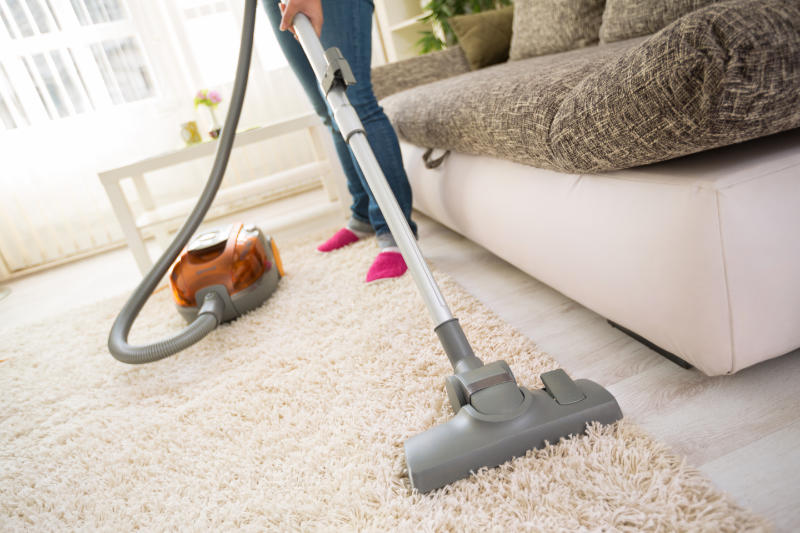
Being a bit more gung-ho with your vacuuming is a good idea during pollen season. And don’t just do the floors; run the vacuum-cleaner across soft furnishings, sofas, cushions, curtains and beds if required too. Airborne allergies expert Max Wiseberg, who’s working with organic allergen barrier balm HayMax, recommends investing in a vacuum with a HEPA (High Efficiency Particle Arresting) filter. The Miele Blizzard CX1 Comfort PowerLine Vacuum Cleaner has a unique filtration system ideal for household allergies, and is approved by Allergy UK.
7. Have an arriving-home wash ritual
You might normally wait until right before bed to have a wash, but during pollen season, it’s a good idea for hay fever sufferers to adopt a quick washing routine as soon as you get home. Pollen can stick to skin and hair, so a speedy shower will help prevent you ‘sitting’ with it for the rest of the evening, and transferring it to your sofa and bed. Keep your shoes and jacket by the front door, or shut away in a closed-off utility room or cloakroom if you have one too, as these will bring pollen inside.
8. Avoid mowing the lawn
This might sound like a no-brainer, but if you’ve got hay fever, you probably want to avoid gardening – particularly mowing the lawn and raking leaves – during pollen season. If you really can’t put these tasks on hold, or rope in somebody else to do them, then at least wear a filtration mask (you can find recommendations on the Allergy UK website).
How to pollen proof your garden
Pollen and mould make it a nightmare for gardeners who want to enjoy their outdoor space, so you need to concentrate on your garden as well as how to reduce pollen in your home.
The good news is that there are ways that hay fever sufferers can reduce the allergen triggers which set off the symptoms in the garden.
Recommended: 6 world-famous gardens you can visit virtually to get your greenery fix.
1. Lose the lawn
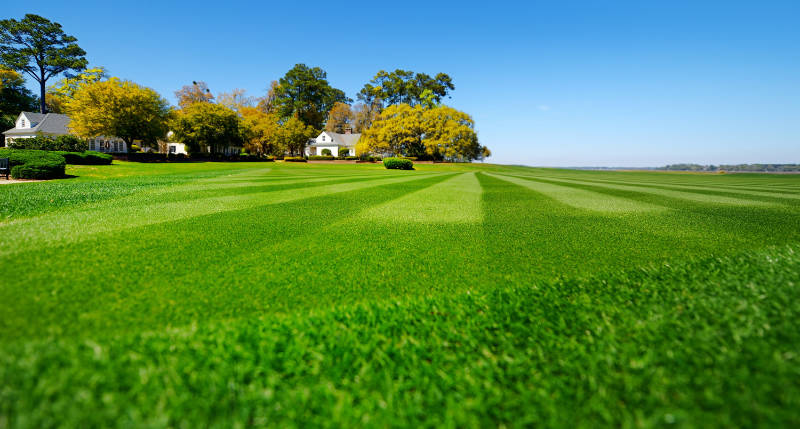
Grasses are among the main causes of hay fever, as they’re wind-pollinated. Their pollen is light and easily inhaled, and the airborne pollen is at its peak from late May to July.
Decking, gravel or paving may be the answer. If you can’t bear to lose your grass, make sure you mow it frequently to stop grasses flowering – ideally getting someone else to mow the lawn rather than doing it yourself.
2. Choose low-allergen plants
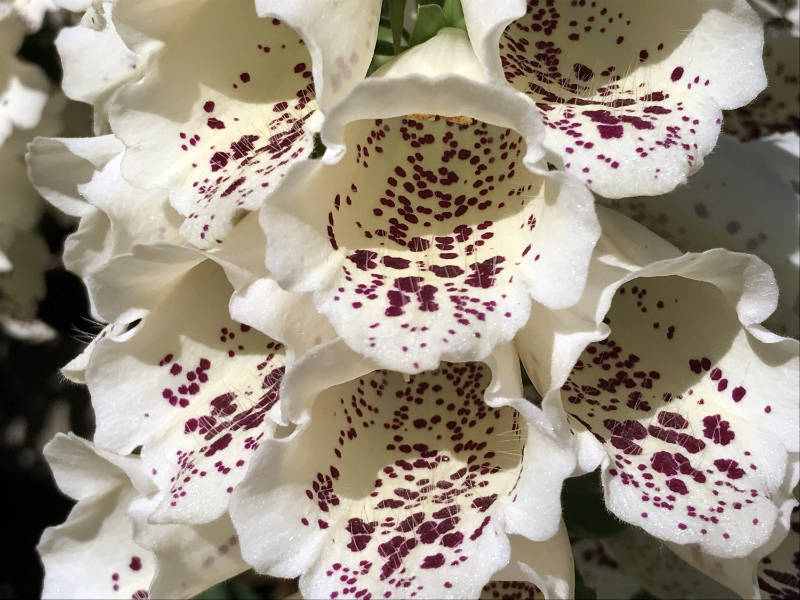
Go for plants which are double-flowered and release far less pollen than single-flowered varieties. Bees might love open-flowered daisy-like plants including asters, but hay fever sufferers do not.
Go for insect-pollinated plants, whose flowers enclose the pollen, so the pollinating insects have to climb inside the plant to reach it. These include foxgloves, honeysuckle, penstemon and snapdragons.
Peonies are also a good choice, as they have thick and sticky pollen, which is less likely to become airborne.
Insect-pollinated plants have male and female reproductive organs within the same flower, so the pollen is not released into the air.
3. Don’t rule out roses
Roses produce heavy pollen, which is less likely to be spread by the wind – but select hybrids rather than wild roses. However, some sufferers’ symptoms are aggravated by heavily-scented plants, so bear this in mind before making your choice.
Read our guide to roses in autumn – garden pruning and rose care.
4. Avoid wind-pollinated plants and trees
Beware of plants with small or feathery-looking flowers, as they’re generally pollinated by the wind. These include ornamental grasses, such as pampas and carex. Ferns can also produce spores affecting people with allergies.
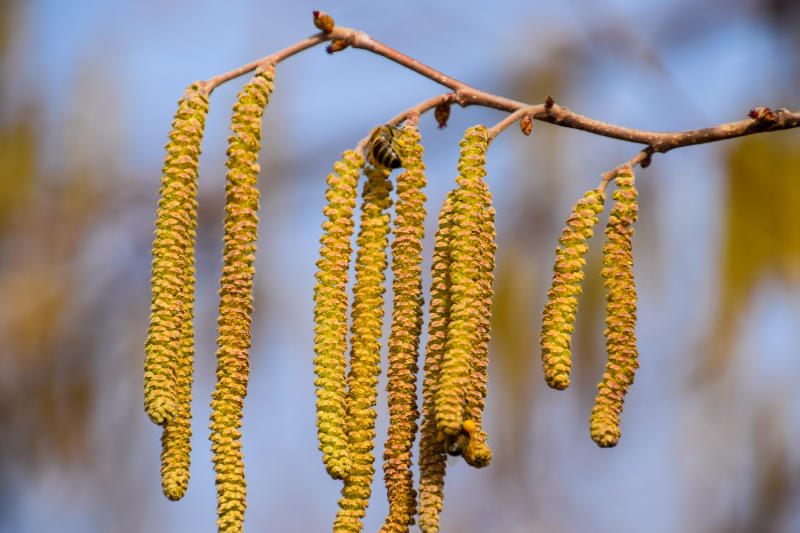
Trees such as elm and oak can aggravate symptoms, too. Don’t include trees or shrubs with catkins in your garden – hazel, birch and alder, for example – as they produce huge amounts of pollen in spring.
Weeds such as nettles, plantain and dock can extend the period of suffering until September.
Trees with large blooms are also a no-no, including horse chestnuts. If you want trees in your garden, go for those with smaller blossom, such as Amelanchier and crab apple.
5. Watch the weather
If you’re determined to venture into the garden, choose a cool, cloudy day, preferably after rain. The pollen count tends to be highest in the early evening, so get out into the garden earlier in the day if you can.
It’s likely there will be more pollen in the air on hot, dry, windy days, so avoid gardening in this sort of weather.
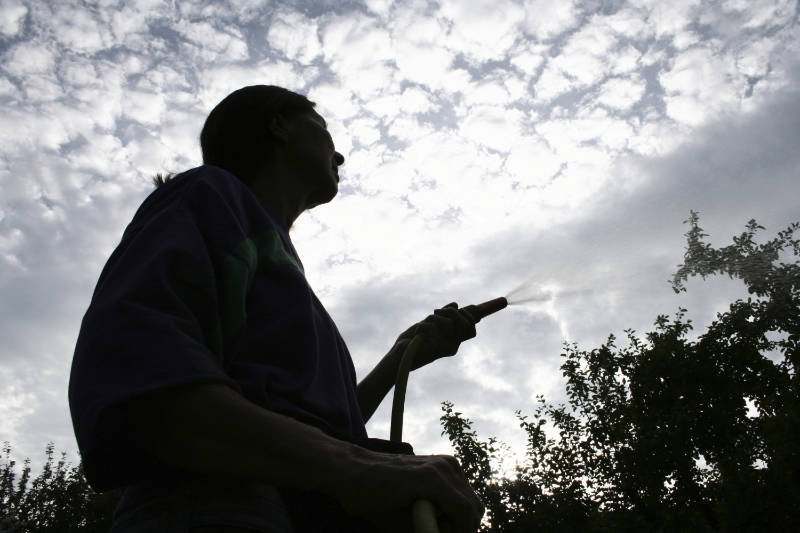
Asthma UK advises sufferers to avoid gardening just before or after a thunderstorm. It’s thought that when the humidity is high, windy conditions during a thunderstorm can cause high levels of pollen and mould spores to be swept up high into the air, where the moisture breaks them into much smaller pieces.
As the particles then settle back down, these smaller pieces of pollen and mould can be breathed into the smaller airways of the lungs, where they can cause irritation and trigger asthma symptoms.
6. Be picky when growing your own
Avoid wind-pollinating crops, such as sweetcorn. Instead, go for self-fertile varieties of beans and courgettes, and leafy crops and salads, such as rocket and beetroot.
Air pollution at home – how to improve air quality in your home























































